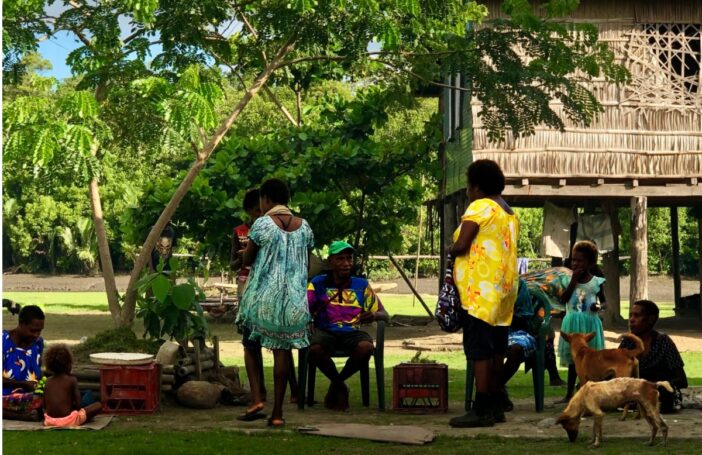The notion of “locally led development” should be reserved for leader-led development through local communities, civil society, churches, small businesses and Indigenous NGOs; something that pre-exists and endures independently of external aid, regardless of the benefits it derives from such aid.
DFAT released its Guidance Note on Locally Led Development last year to critical acclaim, and some managing contractors released their own guidance notes in step. It was good see its release, but I found its language and concepts confusing. DFAT, like other OECD aid agencies, takes a very broad approach to what is considered “local”. Local actors include:
“… partner governments (at national, subnational and local government levels), regional organisations and regional architecture (including the Pacific Islands Forum), the private sector including business, small and medium enterprises, chambers of commerce, local firms, technical assistance and consultancies, and civil society.”
This is a very inclusive list, operating across multiple scales. I find it confusing to treat the national and Pacific regional scales as local, when there are clearly more local dynamics operating at the community or neighbourhood levels where local politics and development hit the ground.
It is important to orient “local” spatially to where aid programming can be targeted. There can be great disparities in socioeconomic conditions between different parts of a country, especially between rural and urban areas, but also within a city, including different sides of the one highway.
The World Bank has a measure for this disparity, called the Gini Coefficient or Index, which measures the extent to which the distribution of income (or, in some cases, consumption expenditure) among individuals or households within an economy deviates from a perfectly equal distribution. The higher the number, the higher the economic disparity. Figure 1 depicts the Gino Index (which can range from 0 to 100) for a selection of sovereign countries that have been assessed in the Pacific region, including Australia. Tonga has the lowest, PNG the highest, and Australia is in the middle.

The causes of this relative disadvantage and strategies for tackling it are complex and contested, including in high-income countries like Australia. But there is widespread agreement that it is related to where you live. Economic disadvantage is geographically localised to particular communities, towns, suburbs or regions. Australia, for example, is adopting “place-based approaches” to tackle it.
In PNG, most people live in rural communities largely beyond the reach of government services or funding, due to a range of factors including geographical remoteness, high transportation costs and lack of public sector staff housing. Patronage politics and misappropriation are widespread, and not enough funding gets past national, provincial and district centres. These communities can be safe, harmonious and well governed. They can also struggle with social problems, competition over scarce resources, landowner disputes, and family and clan-based violence. They are politicised and complex, with resilient traditions and modern influences, and formal and informal governance structures.
Local leaders should be understood as those engaged in this level of local politics, whether through clans, landowning or involvement in churches, community organisations, local governments, businesses and services. The operation of local politics should be understood, respected and not idealised. At its best, local leaders can try to hold higher levels to account to deliver services and funding locally. At its worst, local leaders can act in their own interest, leave their community once elected, or serve patronage networks at higher levels.
The DFAT Guidance Note also treats “localisation” and “locally led development” as largely the same thing. Localisation is an aid modality that maximises in-country expenditure during program implementation, through the employment of national staff and the contracting of local service providers and NGOs. DFAT measures performance on “how it uses local actors in design, delivery and evaluation” by counting the numbers and dollars spent on local staff, sub-contractors, suppliers and partners who are instrumental in delivering its aid programs. I have previously written about my personal experience of localisation within managing contractors, and how this sparks deeper engagements, new approaches and solutions. Localisation is one of the things that the Australian aid program is getting right.
However, localisation operates within the political economy of aid programs, which have their own hierarchies, rules and incentives, with no necessary connection to how local leadership operates within local political domains. Most of the national staff that I know personally, who are employed by aid agencies, are also leaders within their communities, churches, and women’s and sporting organisations. They play such roles informally and privately, with very different hats on. If asked to fill a broader representative capacity within their workplace, they can understandably be reluctant to do so.
It is important to understand what level of the system you are working at, and your position within it. National politics operate fluidly across multiple scales. Local leaders are obviously politically active at higher levels. National politics must make trade-offs between competing local interests, so one locality does not dominate at the expense of others. National leaders also have homes and constituencies, although we should only think of them as a local leaders when they are acting in the local interest.
In thinking about locally led development, let’s not lose sight of the “local” sites where disadvantage and local political leadership occur. Locally led development in this sense is distinct from what is occurring at the district, provincial or national levels, and from the structures and modalities that aid programming itself generates.





Thank you Mark. Complexity is the order of the day. In my experience leadership at community level has little in common with the aspirations of those elected into the three tiered government system. An inherited artefact in contrast to traditional leadership roles. The two systems operate in different worlds that for practical purposes remain barely connected. In my view, while development assistance is preferentially channelled through one at the expense of the other, models to facilitate sustainable last mile services and community driven economic empowerment will remain elusive.